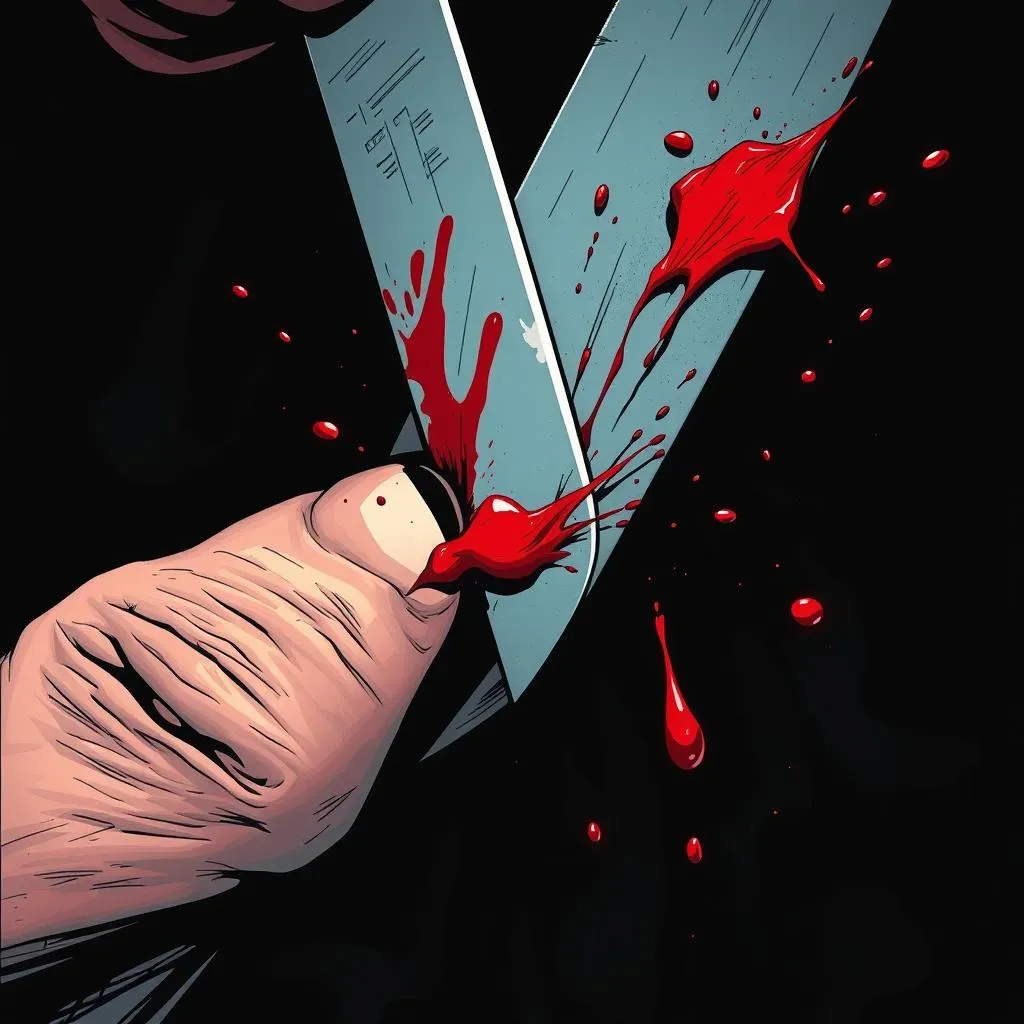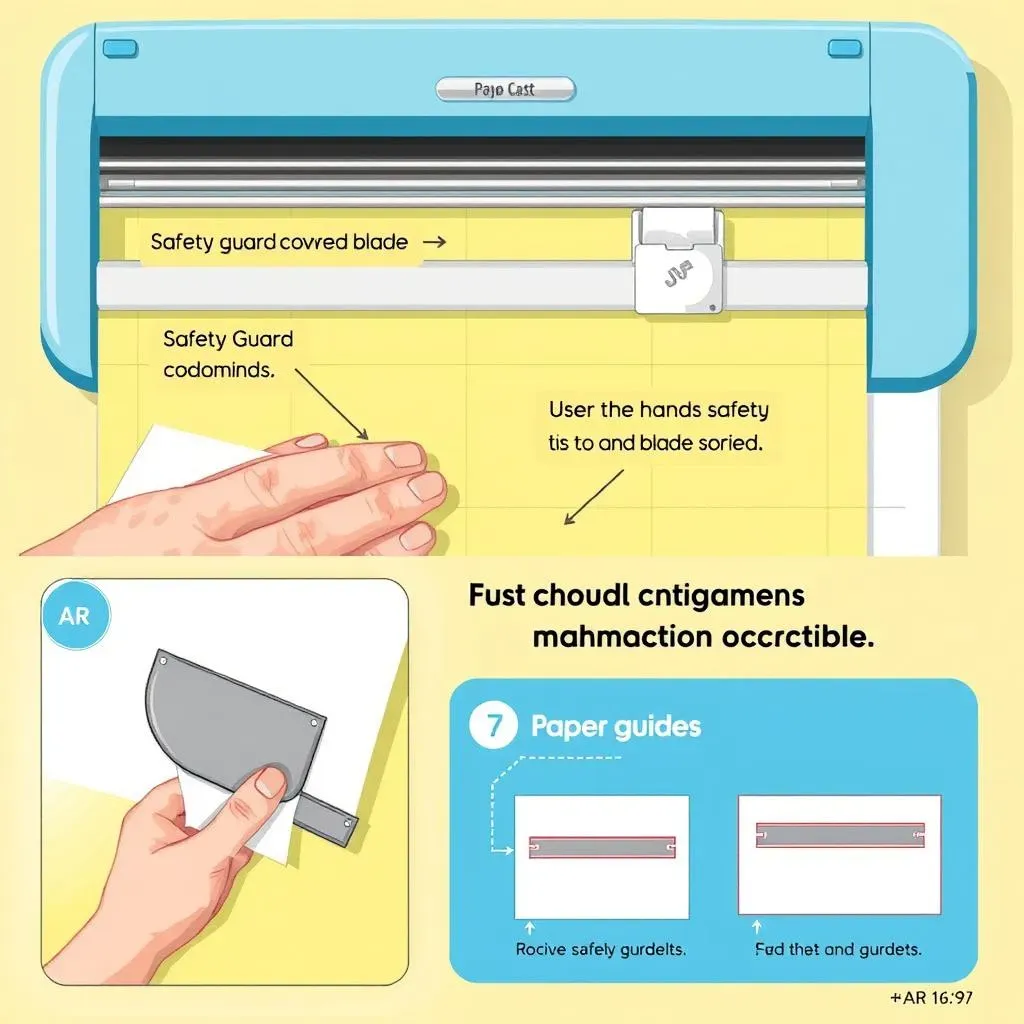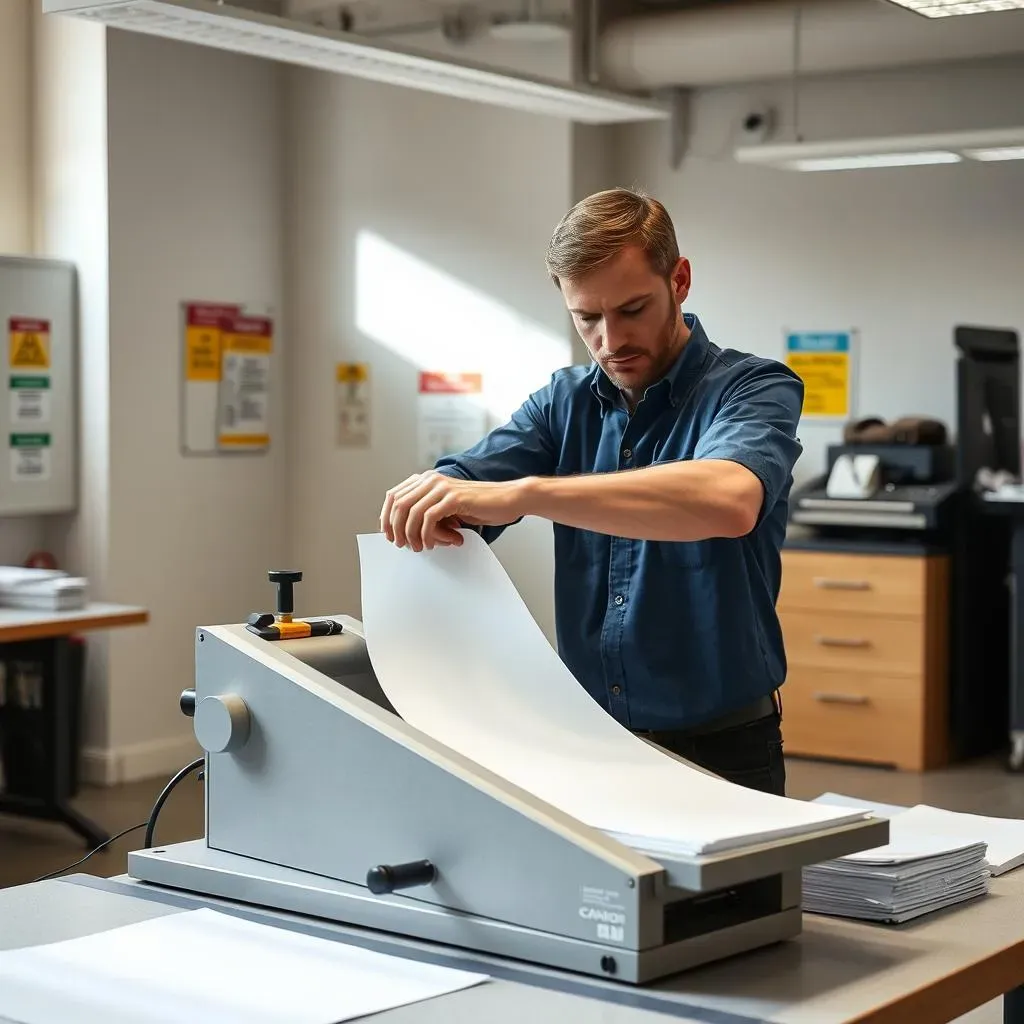Table of Contents
Have you ever wondered, "Are paper cutters dangerous?" It's a valid question! These seemingly innocuous office tools can pose a significant risk if not handled properly. This article will explore the potential dangers associated with paper cutters, focusing on the types of injuries that can occur and the specific hazards involved. We'll then dive into essential safety features you should look for when selecting or using a paper cutter, covering everything from safety guards to proper operating procedures. We'll also discuss practical tips and techniques to minimize risks and ensure safe usage in homes, schools, and offices. By the end, you'll have a clearer understanding of the potential dangers and be equipped with the knowledge to handle these machines safely and confidently. Let's get started on unraveling the truth behind the question: are paper cutters dangerous?
The Dangers of Paper Cutters: Understanding the Risks
The Dangers of Paper Cutters: Understanding the Risks
Severe Cuts and Lacerations
The most obvious danger of paper cutters is the risk of severe cuts and lacerations. The blades are incredibly sharp, designed to slice through stacks of paper with ease. A single slip or miscalculation can result in serious injuries, potentially requiring stitches or even surgery. Imagine accidentally placing your finger where it shouldn't be—ouch! This is why it's crucial to always follow safety guidelines and remain vigilant while operating a paper cutter. For more intricate cutting projects, you might want to check out our guide on mastering paper-cutting techniques to improve your precision and reduce the risk of accidents.
Remember, even seemingly minor cuts can become infected if not properly cleaned and treated. Always wash a cut thoroughly with soap and water, and seek medical attention if the wound is deep, bleeds heavily, or shows signs of infection. Proper first aid is essential in minimizing long-term complications.
- Deep cuts requiring stitches
- Amputation of fingers or parts of fingers
- Severe bleeding
- Nerve damage
Other Potential Hazards
Beyond the immediate risk of cuts, other hazards exist. Older models may lack essential safety features found in modern designs. Malfunctioning equipment, such as a blade that jams or a safety guard that fails, significantly increases the risk of accidents. Regular maintenance and inspections are vital for ensuring the safe operation of any paper cutter. If you're looking to improve your paper-cutting skills, you might find our beginner's tutorials helpful, especially if you want to explore more complex designs.
Furthermore, the force exerted by some paper cutters, especially larger, guillotine-style models, can be substantial. This force can cause crushing injuries to hands or fingers if they get caught in the mechanism. Always ensure the paper cutter is properly secured and understand its operating limitations before use. For those who are keen on exploring paper-cutting as an art form, check out our collection of intricate designs to inspire your creativity.
Hazard | Risk |
|---|---|
Malfunctioning equipment | Increased risk of cuts and injuries |
Lack of safety features | Higher chance of accidents |
Excessive force | Crushing injuries |
Safety Features and Best Practices for Paper Cutter Use
Safety Features and Best Practices for Paper Cutter Use
Essential Safety Features
Let's talk safety features! Modern paper cutters often boast a range of safety mechanisms. Look for features like safety guards that completely cover the blade when not in use. These guards prevent accidental contact. A safety latch or lock is another must-have. It prevents the blade from moving unless the machine is actively being operated. Some models even include automatic shut-off features. These kick in if the machine is overloaded or malfunctions. For more on choosing the right tools, explore our guide on essential paper-cutting tools.
Think of these features as your personal safety net. They’re designed to help you avoid those "oops" moments. Don't underestimate the value of clear, easy-to-understand instructions. Make sure you read and understand the manual thoroughly before you even think about turning the machine on. If you're feeling creative, why not check out our free paper-cutting templates to get started?
- Safety guards
- Safety latches/locks
- Automatic shut-off mechanisms
- Clear operating instructions
Best Practices for Safe Operation
Beyond the machine itself, safe practices are key. Always keep your hands and fingers well clear of the blade. Use the paper guides properly. They help you feed the paper accurately, avoiding any accidental slips. Never attempt to clear a jam with the machine running. Always turn it off first. Think of it like this: you wouldn't stick your hand in a blender while it's on, right? The same principle applies here. For some stunning ideas, browse our collection of paper-cutting cards.
Regular maintenance is crucial. Keep the blade clean and sharp, and report any malfunctions immediately. A well-maintained machine is a safer machine. Think of it like your car; regular servicing keeps it running smoothly and safely. If you're interested in learning more about paper cutting techniques, check out our detailed guide on mastering paper-cutting techniques.
Practice | Benefit |
|---|---|
Keep hands clear of blade | Avoids cuts and lacerations |
Use paper guides | Ensures accurate feeding |
Regular maintenance | Prevents malfunctions |
Are Paper Cutters Dangerous? Minimizing Risks and Promoting Safe Practices
Are Paper Cutters Dangerous? Minimizing Risks and Promoting Safe Practices
Training and Education: The First Line of Defense
Let's be honest, no amount of safety features will help if people don't know how to use the equipment properly. Comprehensive training is absolutely crucial. Before anyone even touches a paper cutter, they need thorough instruction on safe operating procedures. This includes everything from how to feed paper correctly to what to do in case of a jam. Think of it like learning to ride a bike—you wouldn't just hop on without any lessons, would you? Regular refresher courses are also a good idea, especially for those who use paper cutters frequently. For creative inspiration, check out our intricate paper-cutting designs.
Clear signage and visual aids in the workplace can also make a huge difference. Pictures are worth a thousand words, especially when it comes to safety. Simple, easy-to-understand instructions near the machine, along with warnings about potential hazards, are essential reminders. It’s also a good idea to have a designated supervisor or point person to answer questions and address any concerns. For those looking to enhance their paper-cutting skills, our beginner paper-cutting classes are a great starting point.
- Mandatory training programs
- Regular refresher courses
- Clear visual aids and signage
- Designated safety personnel
Regular Inspections and Maintenance: Keeping it Safe
Regular inspections and maintenance are like the unsung heroes of paper cutter safety. They're not glamorous, but they're absolutely vital. Think of it like this: you wouldn't drive a car with bald tires, would you? The same principle applies to paper cutters. Regular checks should be part of a preventative maintenance schedule, ensuring that all safety features are working correctly, the blade is sharp (but not dangerously so!), and there are no signs of wear or damage. For those looking to expand their paper-cutting projects, our guide on easy paper-cutting projects offers great inspiration.
A well-maintained machine is a safer machine. It's as simple as that. Regular servicing can prevent unexpected malfunctions, reducing the risk of accidents. Remember, a small investment in maintenance can save you a lot of trouble (and potential injuries!) down the line. If you're looking for ways to enhance your paper-cutting creativity, our free paper-cutting templates offer a great variety of options to explore.
Inspection Item | Frequency |
|---|---|
Blade sharpness | Weekly |
Safety features | Daily |
Overall condition | Monthly |